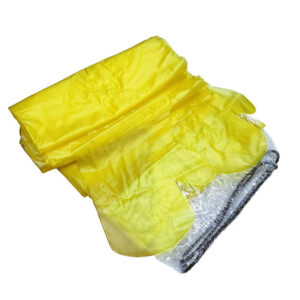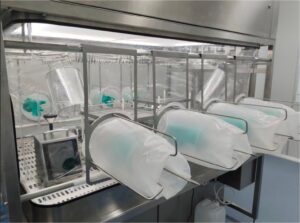Planning a cleanroom facility represents one of the most significant capital investments in controlled environment industries. Whether you’re establishing a pharmaceutical manufacturing line, semiconductor fabrication facility, or biotechnology research lab, understanding equipment pricing dynamics becomes crucial for project success. The complexity of cleanroom systems, combined with stringent regulatory requirements and varying quality standards, creates a challenging landscape where costs can range from hundreds of thousands to millions of dollars depending on your specific needs.
The pharmaceutical industry alone invests over $200 billion annually in facility upgrades and new construction, with cleanroom equipment representing 40-60% of total project costs. Many facility managers struggle with budget overruns exceeding 25-30% of initial estimates, primarily due to inadequate understanding of pricing structures and hidden expenses. Without proper cost planning, organizations risk compromising operational efficiency, regulatory compliance, or return on investment.
This comprehensive analysis provides detailed insights into cleanroom equipment pricing structures, budget optimization strategies, and cost comparison methodologies. You’ll discover how to evaluate quotes effectively, identify hidden expenses, and make informed decisions that balance performance requirements with financial constraints. Our examination draws from industry benchmarks, supplier analysis, and real-world implementation experiences to guide your investment strategy.
What Factors Drive Cleanroom Equipment Pricing?
Understanding the fundamental drivers behind cleanroom equipment pricing requires examining multiple interconnected variables that significantly impact total costs. Classification requirements represent the primary pricing determinant, with ISO 14644 standards dictating air filtration capacity, air change rates, and contamination control specifications that directly correlate with equipment complexity and cost.
Technical Specifications and Performance Requirements
Air handling systems exemplify how specifications drive pricing variations. A Class 10,000 (ISO 7) cleanroom requires 60-90 air changes per hour, while Class 100 (ISO 5) environments demand 240-480 air changes hourly. This translates to equipment cost differences of 300-500% between classifications, with HEPA filtration systems ranging from $15,000 for basic units to $150,000+ for high-capacity installations.
Manufacturing quality standards significantly influence pricing structures across suppliers. Equipment manufactured under ISO 9001, GMP, or FDA guidelines commands premium pricing due to documentation requirements, material specifications, and testing protocols. These quality assurance measures typically add 20-35% to base equipment costs but provide essential compliance validation for regulated industries.
Market Dynamics and Supply Chain Considerations
Global supply chain factors increasingly impact cleanroom equipment expenses, particularly following recent disruptions affecting semiconductor and steel supply chains. Lead times extending 12-18 months for specialized components have created pricing volatility with quarterly increases of 8-15% across major equipment categories.
According to CleanRooms Magazine’s 2023 industry survey, 78% of facility managers report experiencing significant pricing increases, with air handling equipment showing the highest volatility.
Regional manufacturing capabilities also influence pricing structures. European-manufactured equipment typically costs 15-25% more than Asian alternatives, though this premium often reflects superior build quality, comprehensive documentation, and local service support that reduces long-term operational expenses.
Customization Requirements and Integration Complexity
Standard equipment configurations offer the most cost-effective solutions, while customization requirements exponentially increase pricing. Specialized applications requiring unique materials, non-standard dimensions, or proprietary integration capabilities often double or triple base equipment costs. In our experience, projects requiring more than 30% customization benefit from custom-engineered solutions rather than modified standard equipment.
How to Budget for Essential Cleanroom Equipment?
Developing accurate cleanroom equipment budgets demands systematic analysis of requirements, priorities, and implementation phases. Industry benchmarks suggest allocating 45-55% of total cleanroom project costs to equipment procurement, though this percentage varies significantly based on facility classification and operational requirements.
Core Equipment Categories and Budget Allocation
| Equipment Category | Typical Budget Share | Price Range (per sq ft) | Critical Factors |
|---|---|---|---|
| Air Handling Systems | 35-40% | $80-$250 | Classification level, capacity |
| Filtration Equipment | 20-25% | $45-$120 | HEPA/ULPA requirements |
| Environmental Controls | 15-20% | $25-$75 | Precision requirements |
| Pass-through Systems | 8-12% | $15-$40 | Automation level |
| Monitoring Equipment | 10-15% | $20-$60 | Compliance requirements |
Primary air handling equipment represents the largest single expense category, with costs scaling exponentially based on air volume requirements and precision specifications. A 1,000 square foot Class 100 cleanroom typically requires $180,000-$300,000 in air handling equipment alone, while comparable Class 10,000 facilities range from $65,000-$120,000.
Phased Implementation Strategy
Budget planning benefits significantly from phased implementation approaches that distribute capital expenses across multiple fiscal periods while maintaining operational flexibility. Initial phase priorities should focus on core air handling and filtration systems that establish basic cleanroom functionality, followed by secondary systems enhancing operational efficiency.
Phase 1 priorities typically consume 60-70% of equipment budgets and include primary air handling units, HEPA filtration systems, and basic environmental controls necessary for initial operations. This approach allows facilities to begin production while completing secondary installations during scheduled maintenance windows.
Advanced monitoring systems, automated pass-through equipment, and specialized contamination control devices represent excellent candidates for Phase 2 implementation. These systems enhance operational efficiency without compromising basic cleanroom functionality, providing budget flexibility while maintaining upgrade pathways.
Geographic and Supplier Considerations
Regional pricing variations significantly impact budget requirements, with metropolitan markets typically commanding 15-25% premium pricing due to installation labor costs and expedited delivery requirements. YOUTH Clean Tech has observed that rural installations often provide cost advantages through reduced labor expenses, though this must be balanced against potential service accessibility limitations.
Supplier selection strategies should evaluate total cost of ownership rather than initial purchase prices alone. Equipment requiring specialized maintenance or proprietary replacement components often generates 40-60% higher lifecycle costs despite competitive initial pricing.
What Are the Cost Differences Between Equipment Categories?
Equipment cost variations across cleanroom categories reflect fundamental differences in complexity, performance requirements, and manufacturing standards. Understanding these variations enables more accurate budgeting and informed decision-making throughout the procurement process.
Air Handling and Filtration Systems
Air handling equipment exhibits the widest pricing ranges due to capacity and precision variations required across different cleanroom classifications. Basic laminar air flow units suitable for Class 100,000 applications start around $8,000-$12,000, while precision units for semiconductor manufacturing can exceed $200,000 per installation.
HEPA and ULPA filtration systems demonstrate clear cost correlations with efficiency requirements. Standard HEPA filters (99.97% efficiency) cost $200-$800 each, while ULPA filters (99.999% efficiency) range from $800-$2,500 per unit. However, the total cost impact extends beyond filter pricing to include housing systems, monitoring equipment, and maintenance requirements that can triple total filtration expenses.
Environmental Control and Monitoring Equipment
Temperature and humidity control systems vary dramatically based on precision requirements and environmental stability specifications. Standard HVAC controls adequate for general manufacturing applications cost $5,000-$15,000 per zone, while pharmaceutical-grade systems requiring ±0.5°F temperature control and ±2% humidity stability range from $25,000-$75,000 per zone.
Continuous monitoring systems represent increasingly critical components where regulatory compliance demands real-time data collection and analysis. Basic particle counting systems start around $15,000, while comprehensive environmental monitoring networks incorporating pressure differentials, temperature mapping, and automated data logging can exceed $150,000 for complex facilities.
| Control System Type | Basic Range | Precision Range | Premium Features |
|---|---|---|---|
| Temperature Control | $5K-$15K | $25K-$75K | ±0.5°F accuracy, redundancy |
| Humidity Control | $8K-$20K | $30K-$80K | ±2% precision, auto-calibration |
| Pressure Control | $3K-$10K | $15K-$40K | Multi-zone management |
| Particle Monitoring | $15K-$35K | $50K-$150K | Real-time mapping |
Specialized Equipment and Customization Costs
Pass-through systems illustrate how automation and customization requirements dramatically impact pricing structures. Manual pass-through chambers suitable for basic material transfer cost $2,000-$8,000, while automated systems with integrated decontamination, inventory tracking, and ERP integration can exceed $50,000 per installation.
It’s worth noting that cleanroom furniture and storage systems often represent underestimated cost categories. Stainless steel cabinetry, specialized work surfaces, and contamination-control storage solutions typically add $50-$150 per square foot to total project costs, with custom configurations potentially doubling these expenses.
How to Evaluate Cleanroom Equipment Quotes Effectively?
Effective quote evaluation requires systematic analysis extending beyond initial pricing to encompass total cost of ownership, performance specifications, and long-term support considerations. Industry experience demonstrates that lowest-bid selections frequently result in 25-40% higher lifecycle costs due to maintenance requirements, energy consumption, and premature replacement needs.
Technical Specification Analysis
Quote evaluation should begin with detailed technical specification verification against your operational requirements and regulatory compliance needs. Many suppliers provide equipment that meets basic functionality while lacking precision or reliability necessary for sustained operations in controlled environments.
Performance verification requires examining test data, certification documents, and compliance statements rather than relying solely on specification sheets. Equipment claiming HEPA filtration efficiency should include independent testing verification, while environmental control systems require documented stability performance under varying load conditions.
A recent FDA inspection revealed that 23% of pharmaceutical facilities experienced compliance issues directly attributable to inadequate equipment specifications that met basic requirements but failed under operational stress conditions.
Lifecycle Cost Considerations
Total cost of ownership analysis should incorporate energy consumption, maintenance requirements, replacement part availability, and expected service life. Energy-efficient equipment often justifies 20-30% higher initial costs through operational savings, particularly in facilities operating continuously.
Maintenance cost evaluation requires examining service requirements, replacement part pricing, and local service availability. Equipment requiring specialized technicians or proprietary components can generate maintenance costs exceeding initial purchase prices over 5-7 year operational periods.
Supplier Evaluation and Support Capabilities
Supplier financial stability and industry experience represent critical evaluation factors often overlooked during quote comparisons. Companies lacking established service networks or experiencing financial difficulties may offer attractive pricing while creating long-term support risks that jeopardize operational continuity.
Service level agreements should specify response times, on-site support availability, and replacement part delivery commitments. Cleanroom equipment requiring immediate service response for contamination events demands suppliers with 24/7 support capabilities and local parts inventory.
What Hidden Expenses Should You Consider?
Cleanroom equipment projects frequently encounter unexpected expenses that can increase total costs by 15-30% beyond initial budgets. Understanding these potential expenses enables more accurate financial planning and contingency budget allocation.
Installation and Integration Costs
Professional installation requirements often exceed equipment costs for complex systems requiring precision alignment, specialized connections, and comprehensive testing protocols. Air handling system installations typically cost 40-60% of equipment value, while automated systems may require integration expenses equaling 80-100% of purchase prices.
Facility modifications necessary to accommodate new equipment represent frequently underestimated expenses. Structural reinforcement for heavy equipment, electrical upgrades for increased power requirements, and utility connections for specialized systems can add $25,000-$100,000+ to project costs depending on existing facility conditions.
Testing and Validation Expenses
Regulatory compliance testing and validation requirements generate significant expenses beyond basic equipment costs. IQ/OQ/PQ protocols for pharmaceutical applications typically cost $15,000-$40,000 per major equipment installation, while ongoing validation maintenance can require annual expenses of $5,000-$15,000 per system.
Environmental mapping studies, airflow visualization testing, and contamination recovery validation represent additional required expenses for regulated facilities. These studies typically cost $10,000-$25,000 per cleanroom zone but provide essential documentation for regulatory submissions and ongoing compliance verification.
Ongoing Operational Expenses
Filter replacement costs represent substantial ongoing expenses that vary significantly based on environmental conditions and operational intensity. HEPA filter replacement schedules range from 6-24 months depending on application conditions, with annual replacement costs often exceeding $50-$200 per square foot for high-volume operations.
Training requirements for equipment operation and maintenance create additional expenses frequently overlooked during initial budgeting. Comprehensive operator training typically costs $2,000-$5,000 per person, while specialized maintenance training can require $5,000-$15,000 per technician for complex systems.
How to Optimize Your Cleanroom Equipment Investment?
Strategic investment optimization requires balancing immediate operational needs with long-term flexibility and growth requirements. Successful optimization strategies focus on scalable solutions that accommodate future expansion while maintaining current operational efficiency and regulatory compliance.
Performance-Based Selection Criteria
Equipment selection should prioritize performance metrics that directly impact operational efficiency and product quality rather than focusing solely on initial cost considerations. Energy-efficient systems generating 20-30% operational savings often justify premium pricing through reduced lifecycle costs and enhanced sustainability profiles.
Modular equipment designs provide excellent optimization opportunities by enabling capacity adjustments without complete system replacement. Modular air handling systems allow organizations to increase capacity by 25-50% through component additions rather than complete system replacements costing 3-5 times more than incremental upgrades.
Technology Integration and Future-Proofing
Modern cleanroom operations increasingly benefit from integrated monitoring and control systems that enhance operational visibility while reducing manual oversight requirements. Smart systems incorporating predictive maintenance, energy optimization, and remote monitoring capabilities typically reduce operational costs by 15-25% while improving compliance documentation.
Investment in standardized platforms and protocols enables future technology integration without requiring complete equipment replacement. Systems supporting industry-standard communication protocols maintain compatibility with evolving monitoring and control technologies, protecting long-term investment value.
Case Study: Pharmaceutical Manufacturing Optimization
A mid-size pharmaceutical manufacturer recently optimized their cleanroom equipment investment through strategic supplier partnerships and phased implementation. Initial investment focused on core air handling and filtration systems from a single supplier, reducing procurement costs by 18% through volume negotiations while ensuring system compatibility.
Phase 2 implementation incorporated advanced monitoring and automation systems that reduced manual oversight requirements by 40% while improving compliance documentation quality. Total project costs remained within 5% of original budgets despite adding significant functionality through strategic optimization approaches.
| Optimization Strategy | Cost Impact | Operational Benefit | Risk Consideration |
|---|---|---|---|
| Supplier Consolidation | -15% to -25% | Simplified maintenance | Single supplier dependency |
| Phased Implementation | -10% to -20% | Cash flow management | Integration complexity |
| Energy Efficiency Focus | +10% to +20% initial | -20% to -30% operational | Technology obsolescence |
| Modular Design Priority | +5% to +15% initial | Future expansion flexibility | Limited supplier options |
Strategic equipment optimization requires careful balance between immediate cost savings and long-term operational flexibility. Organizations achieving the best results typically invest 5-10% above minimum requirements in scalability and efficiency features that generate substantial long-term value through reduced operational expenses and enhanced adaptability.
Cleanroom equipment pricing demands comprehensive analysis extending far beyond initial purchase costs to encompass installation, validation, and lifecycle expenses. Successful projects balance technical requirements with budget constraints through strategic supplier selection, phased implementation, and performance-focused evaluation criteria. Understanding hidden expenses, market dynamics, and optimization opportunities enables informed decision-making that maximizes return on investment while maintaining operational excellence and regulatory compliance.
The cleanroom equipment market continues evolving with increasing emphasis on energy efficiency, smart monitoring capabilities, and modular designs that accommodate changing operational requirements. Organizations planning cleanroom investments should consider these trends while focusing on solutions that provide both immediate functionality and long-term adaptability. For detailed equipment specifications and pricing guidance, explore comprehensive cleanroom equipment solutions that address diverse application requirements and budget considerations.
What specific cleanroom equipment pricing challenges does your organization face, and how might strategic optimization approaches address your unique operational requirements?
Frequently Asked Questions
Q: What Factors Influence Cleanroom Equipment Pricing?
A: Cleanroom equipment pricing is influenced by several key factors, including the cleanliness level required by the cleanroom, the type of equipment needed, and the materials used in construction. The ISO classification of the cleanroom is crucial, as higher classifications (e.g., ISO Class 1) require more stringent controls and thus are more expensive. Additionally, the choice of materials and specific features can significantly impact costs.
Q: How Do I Plan a Budget for Cleanroom Equipment?
A: To plan a budget for cleanroom equipment, consider the following steps:
- Determine Cleanroom Classification: Understand the ISO classification you need to meet.
- Assess Equipment Needs: Identify all necessary equipment and materials.
- Research Costs: Get quotes from suppliers to estimate costs per square foot, which can range from $100 to $1,000.
- Consider Long-Term Costs: Factor in maintenance and operational expenses.
Q: What Are the Key Components in Cleanroom Cost Comparison?
A: When comparing costs for cleanroom equipment, consider these key components:
- Cleanroom Classification: Stricter classifications increase costs.
- Equipment Type: Different types of equipment, such as HEPA filters and temperature control systems, vary in price.
- Material Costs: The choice of materials affects construction costs.
- Operational Costs: Include ongoing expenses like energy and maintenance.
Q: How Does the Supply Chain Impact Cleanroom Product Costs?
A: The supply chain significantly impacts cleanroom product costs. Factors like raw material shortages and increased demand can drive up prices. For instance, during the COVID-19 pandemic, competition for materials like nitrile and latex led to significant price hikes. Understanding these dynamics is crucial for budget planning and cost comparisons.
Q: What Are the Best Practices for Budget Planning in Cleanroom Equipment Purchases?
A: To effectively budget for cleanroom equipment, follow these best practices:
- Conduct Thorough Needs Assessment: Identify essential equipment and features.
- Compare Quotes: Get multiple quotes from different suppliers.
- Plan for Long-Term Costs: Consider not just initial costs but also ongoing expenses like maintenance and replacement parts.
- Monitor Market Trends: Stay informed about supply chain conditions that could affect pricing.
External Resources
- Cleanroom Equipment – Offers insights into cleanroom equipment pricing, ranging from $5,000 to $150,000, and provides options for budget planning and cost comparison.
- Cleanroom Cost – Provides a comprehensive guide on determining cleanroom costs, including factors that affect pricing and how to estimate costs for budget planning.
- Modular Cleanroom Costs – Discusses the cost of modular cleanrooms, which can range from less than $100 to over $1,000 per square foot, depending on various factors.
- Pharmaceutical/Biological Cleanroom Costs – Offers detailed cost data for pharmaceutical and biological cleanrooms, helpful for budget planning and cost comparisons.
- Cleanroom Rates and Pricing – Provides specific rates for cleanroom usage and equipment, useful for planning and comparing costs.
- Cleanroom Technology and Budgeting – While not directly matching the keyword, this resource offers insights into cleanroom technology and can be useful for budget planning and cost comparisons.
Related Contents:
- Cleanroom Equipment Cost Analysis | ROI Calculator 2025
- LAF Garment Cabinets: Balancing Quality and Budget
- Cleanroom Sink Investment: Calculating Long-Term ROI
- Cleanroom Equipment Types | Classification | Selection Guide
- VHP System Maintenance: Annual Cost Breakdown 2025
- VHP Pass Box Cost Guide: 2025 Pricing & ROI Calculator
- Laminar Air Flow Unit Costs 2025
- Calculating LAF Unit ROI: Is the Investment Worth It?
- The Cost-Effectiveness of BIBO Systems in Industrial Applications




























